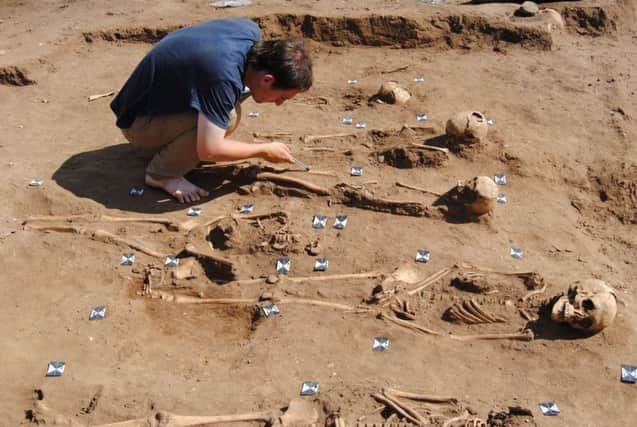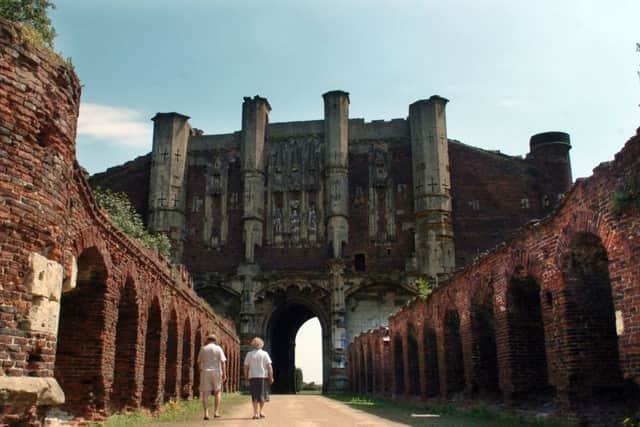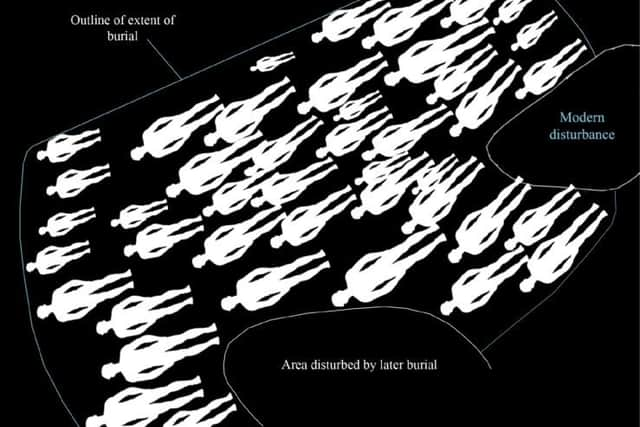Children of the plague: Yorkshire experts uncover a terrible secret


Even as the magnificent, three-storey edifice was taking shape within the sprawling, manicured grounds south of the Humber, disease was overwhelming the people around it.
Only now, 650 years later, have archeologists begun to understand the scale of the tragedy. A mass burial pit, uncovered by experts from Sheffield University, is revealed today to contain as many as 48 victims of a plague that had decimated Europe. More than half the skeletons are those of children.
Advertisement
Hide AdAdvertisement
Hide AdThe harrowing discovery was made in what remains of the little monastery hospital at Thornton Abbey, the first religious house founded by William Le Gros, a landowner who ruled over a vast swath of Lincolnshire and North Yorkshire.


The site, for centuries lost to the land, contains male and female adults along with the remains of 27 children, and suggests that the 14th century community, overwhelmed by the Black Death, was simply unable to cope with the number of victims.
It was one of the worst pandemics in human history, claiming up to 200 million lives as it swept continental Europe from 1346 to 1353, before reaching Lincolnshire in the spring of 1349.
But until now, little has been known about the victims, and it has taken 21st century DNA techniques to piece together some of their stories together.
Advertisement
Hide AdAdvertisement
Hide AdThe Sheffield team sent teeth samples recovered from the site, near Immingham, to McMaster University in Canada, where genetic material was successfully extracted from the tooth pulp. DNA tests revealed the presence of Yersinia pestis, the bacterium responsible for the plague.


Dr Hugh Willmott, of Sheffield University’s department of archaeology, said: “Despite the fact it is now estimated that up to half the population of England perished during the Black Death, multiple graves associated with the event are extremely rare in this country, and it seems local communities continued to dispose of their loved ones in as ordinary a way as possible.”
The only two previously identified 14th-century sites at which Yersinia pestis has been identified are historically documented cemeteries in London, where the civic authorities were forced to open new emergency burial grounds to cope with the very large numbers of the urban dead.
Dr Willmott said: “The finding of a previously unknown and completely unexpected mass burial dating to this period in a quiet corner of rural Lincolnshire is thus far unique, and sheds light into the real difficulties faced by a small community ill-prepared to face such a devastating threat.”
Advertisement
Hide AdAdvertisement
Hide AdItems found at the abbey gave researchers clues to the lives of those who lived there, he added.


“Before we began the dig, the site was just an ordinary green field grazed by sheep for hundreds of years.
“But like many fields across England, as soon as you take away the turf, layers of history can be revealed by archaeology.”
Dr Willmott said one of the artefacts found in the excavated hospital building was a small Tau Cross pendant, thought by some to be a cure for St Anthony’s fire, a term used to describe a variety of skin conditions.
His colleague, Dr Diana Mahoney Swales, said: “Once the skeletons return to the lab, we start properly learning who these people really are.”